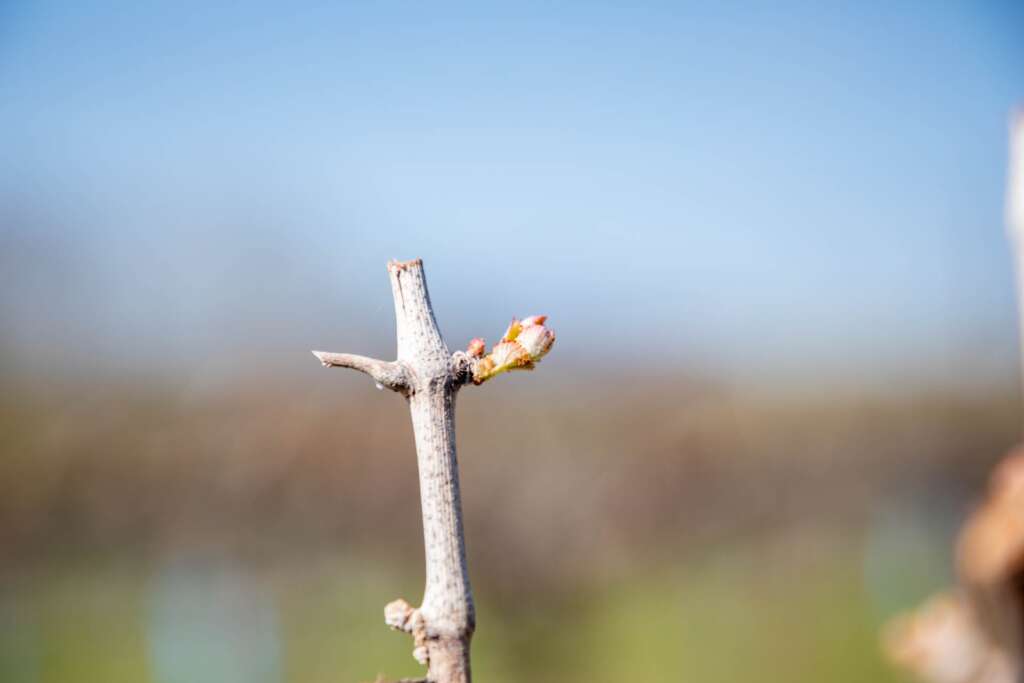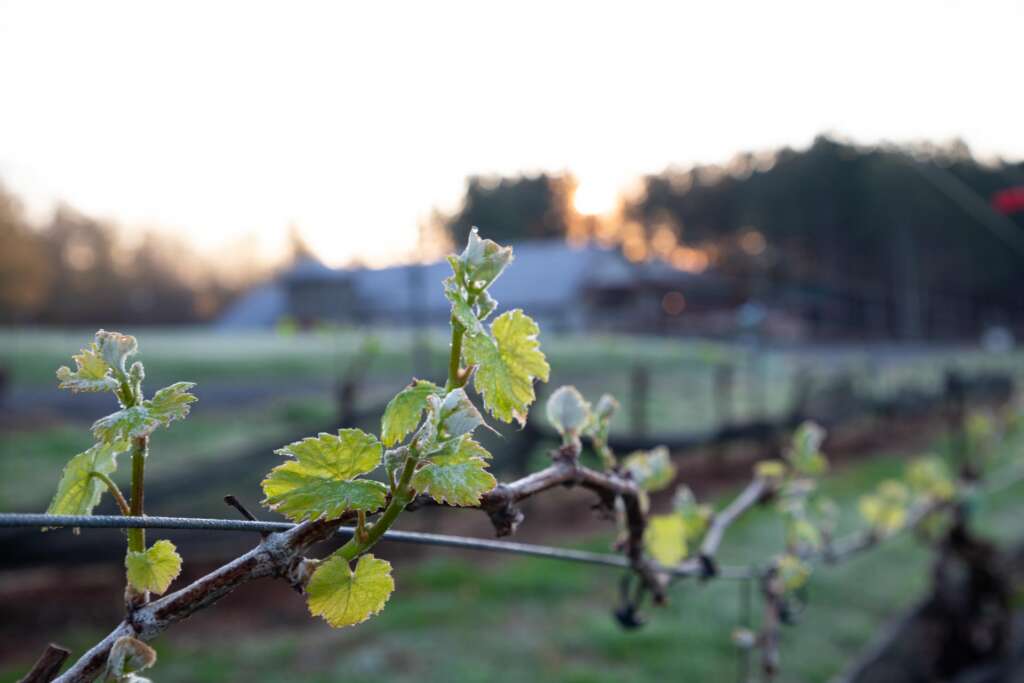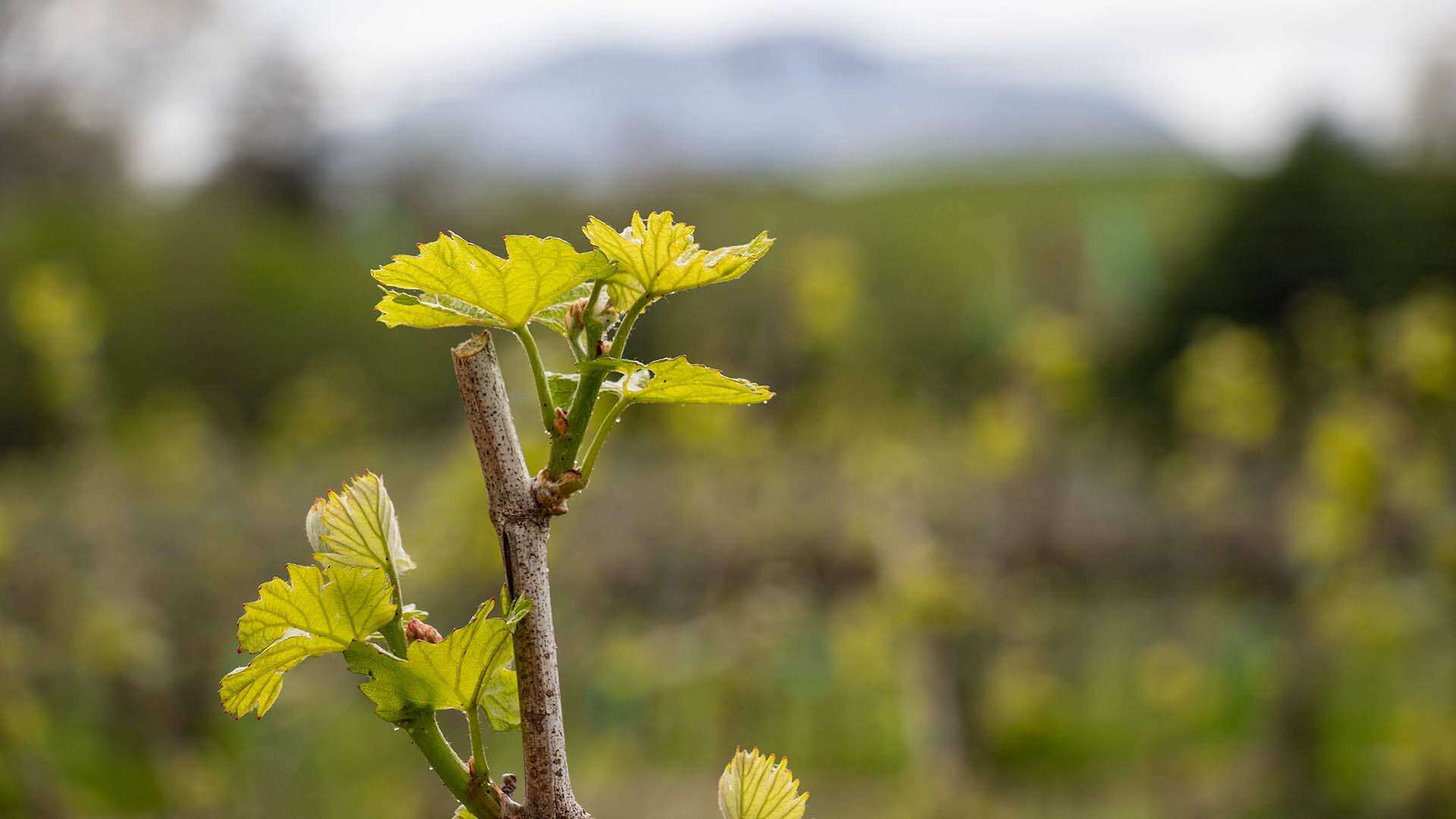Another Spring is just around the corner and folks are already starting to book their wine tours for this wonderful time of year in the Carolinas. It is a great time of year to be out enjoying the beautiful scenery of the Carolinas and specifically the vineyards. The weather is typically going to be warmer during the day with evenings that can still be a little chilly; although this is North Carolina and it could still snow and/or have evenings where it dips down below freezing. While Spring is typically associated with flowers, fresh growth, and pleasant days, it is always a time for worry and anxiety for the vineyard managers. They worry exactly for what the average person perceives Springtime to be – a time of fresh growth. Yes, the Spring is a beautiful time with all of the colors from the flowers in bloom and the light green of fresh growth popping up everywhere but all of this comes with potential risk to the vine.

The Risk of Frost
In North Carolina, bud break typically happens toward the end of March into early April. It won’t happen at the same time everywhere across the state as it depends on a lot of factors that can be unique to each region or even unique to specific vineyards. Once bud break happens for a vine it is arguably at its highest risk until the threat of frost is gone. This is because the initial growth of a vine will include the embryonic flower clusters that are intended to be this years grapes. If these flower clusters are hit by frost, the clusters will be destroyed and yield is going to be reduced for that year. It is a simple but devastating process; the new buds cannot tolerate being frozen. The effects of this can be very substantial destroying up to 80% of the yield (or more!) during some years. In the Carolinas, the window for the risk of spring frost is generally considered to be from bud break until the last full moon of April which usually occurs towards the end of the month creating a window of risk that is about 3-4 weeks. This year (2023) the last, and only, full moon will be on April 6th which is very early in the month. It will be interesting to see if the farmers wisdom of “the last full moon in April” hold true or not.

Managing the Risk
Is there anything that can be done about this frost risk? The short answer is yes but as with other problems when it is man again nature, it would be more accurate to say maybe. There is only so much you can do when you are trying to get 10+ acres to not freeze! What are some of the techniques that vineyard managers can employ? There are many but here are a few tricks that they have up their sleeves:
- Varietal Selection – One way to mitigate the risk of frost is to make sure you plant varietals that have a later bud break. Not all varietals are the same and they have different growth cycles. Some varietals, like Cabernet Franc, bud out later then other varietals. This obviously has to be done in the design and won’t help you if you are sitting on 4 acres of some other varietal that has bud out and it is going to frost tonight.
- Site Selection/Design – Another mitigation factor that will require up front thinking; the site of your vineyard and the design of your vineyard can greatly reduce the risk of frost damage. Cold air will fall so if you have your vines higher on the hills, the cold air will fall and avoid the plants up higher. I have personally seen frost damage occur to to only the bottom 2-3 rows of vines that were planted on a hill where the sloped design saved 80% of the vines that year. This doesn’t seem like it can make that much of a difference but it can actually have a very profound affect on the vineyard.
- Delayed Pruning – Pruning is something that happens every year in the vineyard in order to control or manage the growth of the vine. With some varietals, if you delay pruning, you will delay bud break as the buds on the tip of the cane will grow first. If you let these develop and then cut them off right before bud break, the buds closest to the base of the cane are not as developed and will need more time. This is why you won’t see all of the vines being pruned during the winter months but you will see them being done at the last possible moment. This process is difficult to implement when you have a large vineyard to manage as you need to get everything done in a very short period of time.
- Frost Protection – If you have done everything listed above and you are still faced with exposed buds and a night where there is going to be frost, this is where it gets interesting and downright desperate in some instances. There are a few more techniques that can be employed; sometimes you will see firepots being lit throughout the vineyard, combined with the use of giant fans that can cause beneficial airflow which can help. Spraying the vines with water can protect the new buds, this is because the water will freeze around the bud and actually protect it. There are also a few chemical sprays that can be employed to “buy a few degrees“. All of these methods, however, can only do so much. If you are facing a night with temperatures forecasted to be in the low 20s, it is going to be a tough night and it might be an upsetting morning when the damage is accessed.
After the Frost
Despite all of the efforts and tricks that vineyard managers employ, sometimes frost damage just happens and they have to deal with it and move on. The good news is that it won’t kill the vine. Vines are incredibly robust plants and will continue to grow and thrive in the coming years. It may limit production this year but the vine will live. Any buds that were not completely frozen will continue to grow and the vine may also push a few new shoots out (although these will not be as bountiful). This is life in the vineyard if you are in the Carolinas!
So when you are visiting the vineyards this Spring, try to pay attention to some of the activity occurring in the vineyard and notice the design and layout of the vines (e.g. the hills). As you do this, appreciate all of the hard work that is being done to protect the vines during this vulnerable period. At its core the vineyard is farming with all the typically agricultural challenges facing every other farmer in the area (grapes are not the only crop that is vulnerable to frost damage). So if you see the vineyard team hard at work, say thank you to them as they are probably a little nervous and anxious during this period.

